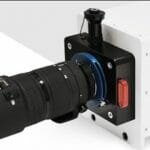Lachanna Arsha, Dr Srikanth Tadepalli and Venkateswarlu Mukiri
The aviation industry benefits from advanced knowledge of impending events to better plan for corrective or preventive measures. A recent advancement is in the field of optimizing overhaul work-scope for improved performance recovery.
In a normal operation scenario, aircraft engines are recommended for overhaul when the available performance margins (Exhaust Gas Temperature (EGT)) are not sufficient for operation. Knowing the reasons for removal, the shop that the asset needs to be directed to, and more importantly the kind of work-scope that would ensure the highest performance gain, allows for seamless and cost-effective task scheduling.
Engine architectures include several components and multiple work-scope levels exist for each component, ranging from low maintenance to heavy maintenance. Isolating, a priori, the exact combination of the required maintenance routine that produces the highest EGT margin after maintenance from within the set of numerous combinations of component and work-scope levels requires thorough analysis and understanding of the impact generated per combination. Inclusion of shop expertise variation adds further complexity to this analysis.
Cyient Engineering and Data Science teams have developed data science procedures to simulate an aircraft engine that ingests a flight’s operational parameters, hours of operation and take-off statistics to suggest possible work-scope combinations that deliver the requisite EGT margin gain. The user can engage with the model to input choice of shop and the expected/required EGT margin gain post-maintenance.
Cyient’s tool –
- Predicts the possible removal reason via Synthetic Minority Over-sampling Technique and Support vector machine classifier
- Migrates the predicted removal reason to a Logistic Regression model which uses shop and required EGT margin gain as additional inputs to generate a codified maintenance score
- Transfers the codified maintenance score to a linear optimization schema that checks for existence (via convergence criteria) and generates the decodified primary sequence
- Considers possible secondary sequences using association rules with the primary sequence as the pivot along with the additional constraint that secondary sequences cannot violate the primary sequence
- Produces expected maintenance scores for each secondary sequence to estimate EGT margin gain for a given shop selection and predicted removal reason
- Compares the estimated EGT margin gain with the threshold consideration and filters the set
- Ranks and sorts the filtered set to down-select the first two sequences based on cost and proximity with the threshold
- Recommends the top 3 sequences in conjunction with the primary sequence with optimal cost
- Displays the final outcome
Overall, a 9-stage architecture has been developed that intelligently blends Machine Learning models with domain knowledge to qualify data science outcomes with engineering feasibility. The net result is a readily implementable solution with the added benefit of automation. Further, the models developed have been configured to auto-learn, allowing for model update when data refreshes without manual intervention. Our customers now have access to this tool to better plan, schedule and recommend servicing shops the optimal work-scope combination for their assets. This offering helps overhaul shops for better work scope planning and decreases turnaround time.







